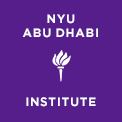In this blog post, Tom Abi Samra writes about his journey to becoming a scholar of Arabic literature and his insights from reading a seventeenth-century work.
Once upon a time, not a long time ago, as an undergraduate at NYU Abu Dhabi, I was studying to become a physicist or a chemist. But the uncertainty of lab work and the constant possibility of failure scared me. So, I thought, I’d become a computer scientist; the apparent certainty of computer code was comforting. As I navigated my transition into computer science, I enrolled in a course on modern Arabic literature. “I miss writing essays,” I told myself. In high school, I had read Tayeb Salih’s Season of Migration to the North and Naguib Mahfouz’s Midaq Alley, and I had enjoyed textual analysis and essay writing. After reading Elias Khoury’s Little Mountain and discussing the Lebanese Civil War in my college class—after having heard stories of the war from my family—I began thinking that modern Arabic literature is my calling. I wanted to become a Marxist critic of modern Arabic literature. But this urge was suppressed as I fumbled through the writing of my computer code. It was only as I was racing against the deadline to complete my final paper for the literature class, on Emile Habiby’s The Pessoptimist (perhaps Khoury was too close to home), that I finally decided to study Arabic literature. I remember a distinct feeling of pleasure while writing that essay. Despite the pressure of the deadline, I was enjoying myself; the “assignment” didn’t feel like a task to be completed.
After switching majors to become a scholar of modern Arabic literature, I thought (and still think) that it wouldn’t be possible without a solid foundation in the classical tradition. For my senior thesis, I reasoned, I could force myself to study the tradition by writing about it. Modernity could wait. (The joke’s on me, as modernity is still waiting; I am working toward a PhD in premodern Arabic literature.) I didn’t know where to start to find a topic, and I didn’t want to be the thousandth person to write about al-Mutanabbī or al-Jāḥiẓ. I vaguely knew about the Library of Arabic Literature housed at my own institution, and so I decided to browse their website in search of a text to write about.
 Soon enough, I came across Yūsuf al-Shirbīnī’s Hazz al-quḥūf, translated as Brains Confounded by the late Humphrey Davies. It is a book from seventeenth-century Egypt that, formally speaking, is a commentary on an Arabic poem written by a peasant. In practice, however, it digresses more often than not into anecdotes about peasants not directly related to the verse being commented on; these digressions include quotations from the Quran, ḥadīth, Arabic poetry, and other sources of adab, as well as what seems to be first-hand observations about peasant life. While the book’s organizational qualities—as much as its content—make it unique, Arabic literature written between roughly the 13th and 18th centuries AD was often labelled in both Western and Arabic scholarship as uninteresting, repetitive, too ornamented, and so on. This six-century period was called a period of decline (inḥiṭāṭ), in which Arabic culture stagnated. Obviously, this is not true, but work on this period is only now beginning to pick up.
Soon enough, I came across Yūsuf al-Shirbīnī’s Hazz al-quḥūf, translated as Brains Confounded by the late Humphrey Davies. It is a book from seventeenth-century Egypt that, formally speaking, is a commentary on an Arabic poem written by a peasant. In practice, however, it digresses more often than not into anecdotes about peasants not directly related to the verse being commented on; these digressions include quotations from the Quran, ḥadīth, Arabic poetry, and other sources of adab, as well as what seems to be first-hand observations about peasant life. While the book’s organizational qualities—as much as its content—make it unique, Arabic literature written between roughly the 13th and 18th centuries AD was often labelled in both Western and Arabic scholarship as uninteresting, repetitive, too ornamented, and so on. This six-century period was called a period of decline (inḥiṭāṭ), in which Arabic culture stagnated. Obviously, this is not true, but work on this period is only now beginning to pick up.
I therefore saw an opportunity. I could do important work on the premodern period, in order to develop an ear for classical Arabic, while staying true to my modernist, politically-committed side: I could contribute, however modestly, to the dismantling of the decline paradigm produced by Orientalist 20th-century scholarship. What’s more, I was interested at the time in the relationship between formal and colloquial Arabic, and how they figured together in texts. I had noticed this phenomenon in modern Arabic novels. As a result of Brains Confounded’s subject matter—the countryside and its inhabitants—the text employs a variety of Arabic registers, from classical Arabic (fuṣḥā) to colloquial (ʿammīyah), and everything in between—what scholars call “middle Arabic.” I could explore many of the questions I had developed an interest in while studying modern Arabic, using a classical text.
I approached Maurice Pomerantz, who would become my senior thesis advisor, and asked him if he’d be willing to guide my work on the text. He seemed enthusiastic, as he always was and is. He may have been apprehensive at the fact that it’s a dizzying text, hard to pin down. If he was, I definitely didn’t register the apprehension and went for it. (Fortunately, I only realized that the text had this reputation after speaking to others about my work many months after embarking on the research.)

Teyat (oilman), his shop and customers at Cairo (1851) by Prisse d’Avennes. CC0 1.0 via New York Public Library.
When I began reading the text, I indeed didn’t know how to make sense of it, but I attributed my confusion to the fact that I didn’t know the classical tradition. This semi-obliviousness is probably what made the task doable in the first place. I plowed through the Arabic, with more than the occasional glance to the righthand page with Humphrey Davies’s deft translation. Not only is the text brimming with Egyptian colloquial language (which I wasn’t very familiar with), but its formal features—bewildering humorous digressions; random anecdotes that share features and characters with The Thousand and One Nights; and commentary on a made-up poem by a certain peasant Abū Shadūf—are hard to map out into a coherent system, despite the promise of coherence given by the book’s premise as a sharḥ, or commentary.
After reading chunks of the book in both Arabic and English—the latter of which I treated as an explication de texte as much as a translation—I came back to my advisor starry-eyed but confused. The text was “so interesting,” I thought and probably told him, but I didn’t know which door to access it from. He sent me to the Translator’s Introduction, which I had naively ignored in favor of the real deal. Raising questions as much as giving answers, I embarked on the arduous process of tracking down all the sources Davies mentions in said introduction, some being articles or books published in obscure Arabic journals many years ago. I immersed myself in the world of Ottoman Cairo and its countryside, through the text and the secondary scholarship that I managed to track down.
Soon after I began writing, or attempting to write, about the text, my advisor told me that I “sounded like a historian,” probably because much of what I was reading about it was written by historians. I tried my best to avoid this pitfall as a scholar of literature, of aesthetics, but it was only quite late in the writing process that I realized that this historical approach was precisely the problem. The text offered so much detail about peasant life and the colloquial Egyptian dialect in seventeenth-century Egypt (which is rare to come by in other sources) that historians and linguists could not dispense with it as a text to be mined for historical details, even though the veracity of much of what is in the text is questionable.

Three Mamluk lancers on horseback by Daniel Hopfer. Public domain via Wikimedia Commons.
The fact that this text had been approached either as a purely historical one, or, more recently, as a purely a literary one became the premise according to which I structured my argument: the text has undeniable aesthetic qualities—it is a work of adab, or belles-lettres—yet it is also packed with historically valuable detail. I argued, then, that the work is in line with what Elias Muhanna has called the “encyclopedic ethos” of the Mamluk period, which, it seems to me, extends into the Ottoman period as well. Although not nearly as long as Mamluk encyclopedias, Brains Confounded nonetheless remained faithful to this literary, if also systematic, technique of anthologizing poetry, anecdotes, the Quran, and ḥadīth (among other genres). While Mamluk-era encyclopedias aimed to include “the world in a book,” here we have a sort of themed encyclopedia—the theme being peasant life—structured around a commentary on a fictive poem by an Egyptian peasant.
This book may seem like an odd choice of text for the Library of Arabic Literature, since one would assume that an encyclopedic work is not literature in its strict sense. Yet, LAL in its very project is expanding the definition of literature itself in its modern, Anglophone sense, by staying to true to the concept and practice (and not definition, because there doesn’t seem to be one) of adab, or “literature,” in the Arabic tradition. In one way, Brains Confounded is a niche text, and one that has a much smaller audience than, say, the travelogue of Ibn Faḍlān, Ibn Qutaybah’s The Excellence of the Arabs, or Maʿmar ibn Rāshid’s biography of the Prophet Muhammad. But from another point of view, Brains Confounded is a key text in Arabic literature and in LAL, insofar as it exemplifies the broadness of the concept of adab. As the saying goes, “min al-adab tark al-adab,” which roughly translates to, “it is part of literature to deviate from its conventions.”
Tom Abi Samra is a PhD student in Near Eastern Studies at Princeton. He works on Arabic literature, with a focus on the 13th–19th centuries, in order to challenge the long-held belief that this period is one of cultural decline followed by one of cultural awakening. He has an AM in Comparative Literature from Dartmouth and a BA in Literature and Creative Writing from NYU Abu Dhabi. You can find him on Twitter at @tabisamra.

